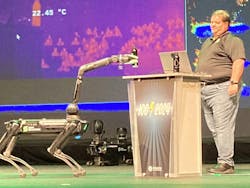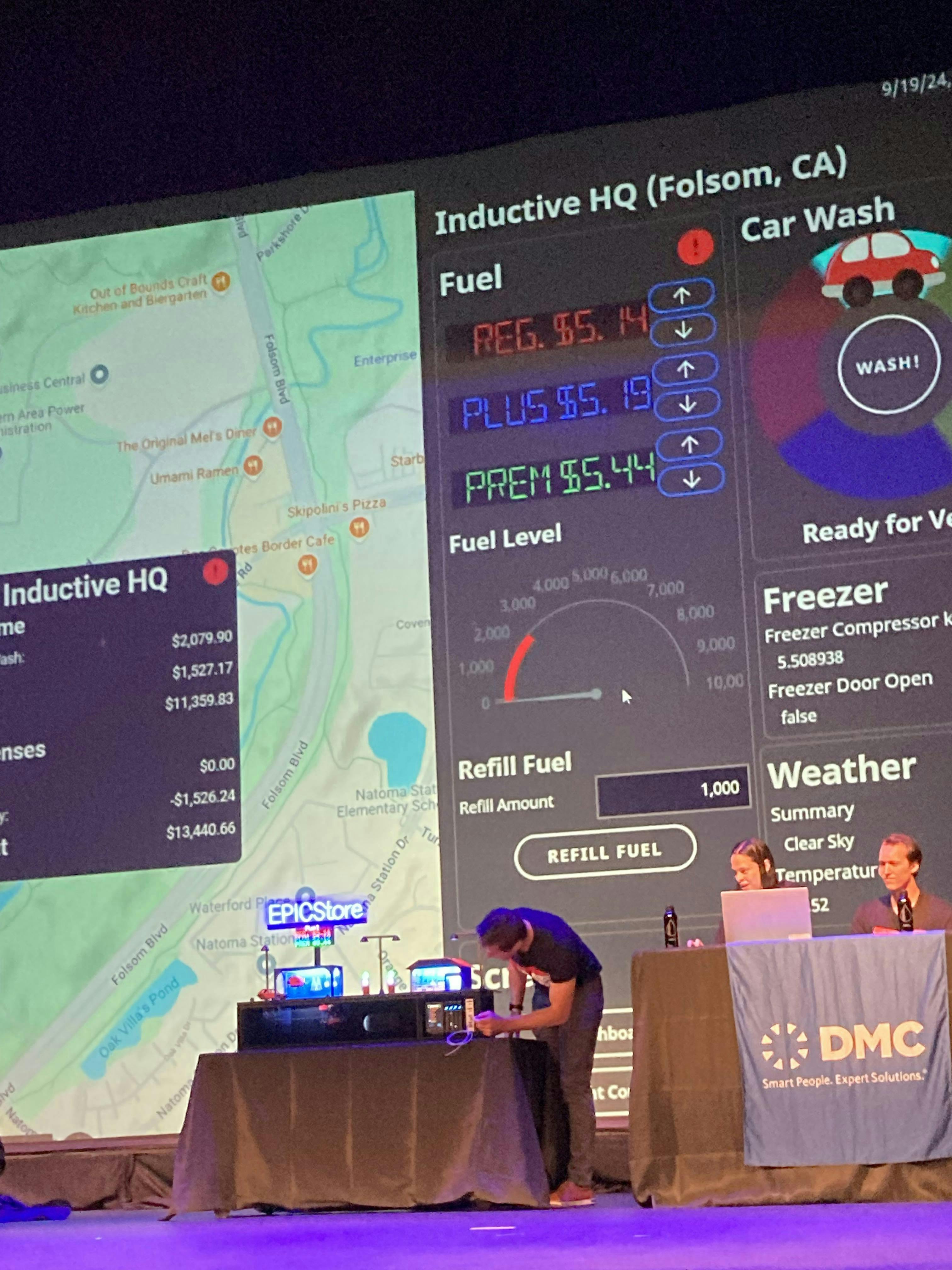Starting with its traditional Firebrand Award winners and ending with the finals of its Build-a-Thon competition, Inductive Automation served up a smorgasbord of case studies of its web-based SCADA/HMI software to close to 1,000 visitors at its Inductive Community Conference (ICC) on Sept. 16-19 in Folsom, Calif.
Each of these specific examples provided ample evidence that automation and digitalization is more likely to support users and create new opportunities, rather than take them away. “Automation doesn’t replace people. It’s empowers them. Automation is a force multiplier,” says Travis Cox, chief technology evangelist at Inductive. “When our founder started this company 20 years ago, no one believed we could break through all the entrenched automation and old, closed, locked-down SCADA systems that killed innovation. Our open, modular, web-based Ignition SCADA software and its unlimited licensing model made automation available to far more users, whether they’re implementing a massive application with 100,000 tags or a small, edge project with just a few tags.”
Many of these users learned to apply Ignition at the company’s online Inductive University (IU) that just turned 10 years old. In fact, its videos have been viewed 10 million times, and it presently has 100,00O accounts for users in 140 countries, who have earned 30,000 certificates.
2024 Firebrand winners
This year, more than 80 projects competed to win one of just six Firebrand Awards for 2025. The winners include:
- CertainTeed exterior and interior building products had many aging systems that couldn’t achieve sufficient operating efficiencies, integrate orders from SAP software, and display operating performance 24/7, so it used Ignition to create easy-glance KPIs for scrap quantities, downtime events and other parameters, and scale them up to 15 plants with more on the horizon;
- To make the most of raw materials by improving recipe management, Deloitte Australia partnered with Goodman Fielder, which operates 40 baking and food plants in Australia and the Pacific region, and supplies 30,000 retail outlets. Information from its baking systems was usually displayed on outdated HMIs and Excel software, so Goodman and Deloitte’s worked with system integrator Efficient Factory Automation to use Ignition to develop automated and dynamic recipes that increased visibility and decreased waste and downtime.
- Fermilab National Accelerator Laboratory in suburban Chicago maintains a -200 °F, liquid argon application as part of its short-band neutrino detector (SBND), and this system relies on pressure sensors and control valves managed by a manually configured PLC. To update this process, Fermilab and its cryogenic contractor adopted Ignition software, so it could also add more sensors and valves, and add alarms. Its planned similar upgrades at its deep underground neutrino experiment (DUNE).
- To coordinate its many advanced and isolated system that produce ibuprofen and other medicines, Spain-based Cinfa Pharmaceutical Co. worked with system integrator Idom to improve the communications and messaging required by its new plants and products. Cinfa also used Ignition to quickly build its 21 CFR Part 11 and management system.
- Neomatrix brought process data together, developed a single, standardized, scalable platform, and made it available to optimize smart manufacturing at Lucid Motors’ electric car plant;
- Madkour Group is building an automated irrigation system as part of an effort by Egypt’s government to reclaim about 3 million acres. Phase 1 of the New Valley/Toshka project covers 750,000 acres, and Madkour is using Ignition for templates, connectivity, visualization, recording and analysis of the project’s 200 pump sites, five lift stations and 2,000 sprinklers.
Ignition on the move
While HMIs using Ignition software have long appeared on laptops and smart phones, system integrator Gray Solutions took this initial mobility a step further at ICC 2024. It implemented the Ignition Perspective module for building mobile-responsive HTML applications on a four-legged Boston Dynamics robot in conjunction with its software development kit (SDK), and enabled it to make temperature measurements or conduct other event-driven inspections. Donald Bailey, senior engineer for digital transformation at Gray Solutions, showed how the robot acquired a Lidar map of its onstage location, which let it identify and pick up a 22 °F bottle from a nearby lectern.
Convenience store challenge
This year’s Build-a-Thon challenged teams to develop a detailed interface in just two days for the gas pumps, car wash, lights, other devices and I/O points at a model of a convenience store controlled by Opto 22’s groov EPIC controller and running Ignition Perspective software. The two system-integrator finalists, Chicago-based DMC and England-based BIJC SCADA Systems, built dashboards that displayed inventory levels, prices, transactions, revenue, equipment status, alarms, ambient weather and other parameters, and accepted instructions for adjustment, including operating the car wash and lights. In a live, audience vote following the demonstrations, DMC won by earning 306 votes, which edged out BIJC’s 245 votes.
About the Author

Leaders relevant to this article:


